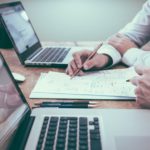The demand for seafood across the globe is intensifying and trying to keep pace with rising consumption levels creates the sort of challenges that are being met by the growth in sustainable aquaculture.
Natural stock levels arguably peaked some while ago, which is why sustainable aquaculture has become such a growth industry, with production levels doubling over the last decade or so, and it is likely that it will have to do the same again over the coming decade, especially with the global population rising, meaning there are more mouths to feed.
Here is a look at what the industry is doing to accommodate this level of growth and maintain an upward curve in production levels.
Ongoing investment program in new technologies
It is fair to say that sustainable aquaculture has already evolved from its early days but the industry is still relatively new and that means that more research is needed and new technologies need to be embraced.
The research that is going on is mainly focused on several key areas, in particular, breeding, feeding, disease control, and weed control.
There are improvements that are being made with regard to these aspects of aquaculture and it is clear that science and technology will play a pivotal role in helping to develop efficient and low impact production systems that are sustainable and work in harmony with existing methods.
The trend is toward a shift away from the fish-based feed
Another major trend in the industry that is being implemented and adopted by the leading players is to find a way of reducing dependence on fish or fish oil-based feed.
These traditional feed options are not sustainable in the longer term which is why there is a clear move toward using plant-based food.
The problem lies in the fact that using wild caught or juvenile fish as feed is simply not a viable option going forward as it is not sustainable. Fish farms can require large volumes of wild-caught fish in order to feed salmon being reared in farms, and it is estimated that approximately three pounds of wild fish, such as herring and mackerel, are required to produce just one pound of farmed salmon.
This is why industry leaders are focused on reducing this dependency and creating a reliable and sustainable plant-based feed as the way to allow further growth in production numbers.
Taking a wider view of the environmental impact
Rather like the issue of climate change, it tends to pay to look at the bigger picture and create a blueprint for tackling the problem on a global scale as well as understanding the impact that individual actions can have.
With regard to the aquaculture industry, there has been a noticeable shift in emphasis where there has been a collaborative approach to environmental issues rather than just looking at each farm individually and seeing how they operate, in isolation.
By looking at the cumulative environmental impact it means that issues such as water pollution, disease control, and protecting the ecosystem in each area, has a better chance of being tackled effectively when you look at the problem on a wider scale.
This level of spatial planning and zoning is believed to be a way of ensuring that aquaculture capacity is not exceeded, ensuring sustainability.
Better training and awareness
It is also clear that industry leaders need to encourage greater dialogue and input from governments and policies need to reflect the needs of sustainable farmers.
When better production methods are developed in the industry it is in everyone’s interest to see these practices adopted. To make this happen, there needs to be a better level of education and government assistance to help farmers implement these new sustainable methods, with the help of funding for upgrades.
It is apparent that some farmers are not fully aware of the potential negative impact of some agricultural practices and that is why the industry recognizes the need to get everyone aligned in terms of education and resources so that issues like sustainable wastewater treatment methods can be tackled effectively.
Information technology has a big role to play
Sustainable aquaculture is an industry that is still in its infancy when you compare it to other agricultural and farming sectors, but many of the leading players see this as an excellent opportunity to take advantage of advancements in things like information technology, making it a modern business model in comparison to more traditional farming models.
For example, advancements in mapping and satellite technology, ecological modeling, and monitoring and planning systems, are all able to provide a framework for continuing developments in aquaculture systems.
It is suggested that an industry platform that adopts and integrates these technologies could provide farming organizations and governments with the tools to be able to improve spatial planning and monitoring.
Information technology is going to be key to helping the industry grow while maintaining the level of sustainability required.
Denmark leads the way
It is widely acknowledged that Denmark is leading the field when it comes to the recirculation system aquaculture.
This method manages to recirculate just over 95% of the water used in the process. The wastewater that is discharged is filtered and the sludge is repurposed and used for biogas or as a fertilizer.
The discarded water is subsequently treated in order to remove nitrate.
Some fish farms on land are already using recirculation systems to recycle their water and when you consider that this method is capable of using as much as 100 times less water per kilo of fish compared to traditional land-based systems, this is a good example of sustainability in action.
Another advantage attached to this system that is worth noting is the fact that it makes it easier to monitor the content and quality of the water more easily in this process, which means that the threat of disease can be minimized, resulting in a lower dependency on antibiotics.
It has to be accepted that there is no longer enough seafood in our oceans to meet demand and that is why there are so many positive steps being taken by leaders in sustainable aquaculture in order to bridge that gap in the best possible way.
Related Posts
Hi there! I’m Sethu, your go-to guy for all things tech, travel, internet, movies, and business tips. I love sharing insights and stories that make life more interesting. Let’s explore the world together, one article at a time!











